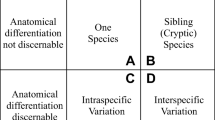Abstract
The Colombian armed conflict has been catalogued not only as the longest civil war in the western hemisphere, but also as having one of the highest indexes of missing persons. Among the several challenges faced by forensic practitioners in Colombia, the commingling of human remains has been recognised as one of the most difficult to approach. The method of osteometric sorting described by Byrd and Adams and Byrd (2008) has proven relevant as a powerful tool to aid in the reassociation process of skeletal structures. The aim of this research was to evaluate the three osteometric sorting models developed by Byrd (2008) (paired elements, articulating bone portions and other bone portions) in a sample of modern Colombian individuals. A set of 39 linear measurements was recorded from a sample of 100 individuals (47 females and 53 males aged between 20 and 74 and 18 and 77 years, respectively), which was used to create a reference sample database. A different subset of eight individuals (five females aged between 23 and 48 years, and three males aged between 27 and 43 years) was employed to randomly create six small-scale commingled assemblages for the purposes of testing the osteometric sorting models. Results demonstrate that this method has significant potential for use in the Colombian forensic context.
Similar content being viewed by others
References
L’Abbé E (2005) A case of commingled remains from rural South Africa. Forensic Sci Int 151:201–206
Djuric M, Dunjic D, Djonic D, Skinner M (2007) Identification of victims from two mass-graves in Serbia: a critical evaluation of classical markers of identity. Forensic Sci Int 172:125–129
Snow C, Folk E (1970) Statistical assessment of commingled skeletal remains. Am J Phys Anthropol 32:423–428
Byrd J (2008) Models and methods for osteometric sorting. In: Adams B, Byrd J (eds) Recovery, analysis, and identification of commingled human remains. Humana Press, Totowa
Scientific Working Group for Forensic Anthropology (SWGANTH). (2013). Resolving commingled human remains. [Electronic], Available: [2013-01-22]
Haugaard L, Nicholls K (2010) Rompiendo el silencio en la búsqueda de los desaparecidos de Colombia. Grupo de Trabajo sobre Asuntos Latinoamericanos y la Oficina en los Estados Unidos sobre Colombia, Washington DC
Gómez A, Patiño A (2007) Who is missing? Problems in the application of forensic archaeology and anthropology in Colombia’s conflict. In: Ferllini R (ed) Forensic archaeology and human rights. Charles C Thomas Press, Springfield
Adams B, Byrd J (2006) Resolution of small-scale commingling: a case report from the Vietnam war. Forensic Sci Int 156:63–69
Ubelaker D (2002) Approaches to the study of commingling in human skeletal biology. In: Haglund W, Sorg M (eds) Advances in forensic taphonomy. Method, theory and archaeological perspectives. CRC Press LLC, Boca Ratón
Adams B, Byrd J (eds) (2008) Recovery, analysis, and identification of commingled human remains. Humana Press, Totowa
Ubelaker D (2008) Methodology in commingling analysis: an historical overview. In: Adams B, Byrd J (eds) Recovery, analysis, and identification of commingled human remains. Humana Press, Totowa
Byrd J, Adams B (2003) Osteometric sorting of commingled human remains. J Forensic Sci 48(4):717–724
Ferrante L, Cameriere R (2009) Statistical methods to assess the reliability of measurements in the procedures for forensic age estimation. Int J Leg Med 123:277–283
White T, Black T, Folkens P (2012) Human osteology. Academic Press – Elsevier Inc., Burlington
Saks M, Koehler J (2005) The coming paradigm shift in forensic identification science. Science 309:892–895
Steadman D, Adams B, Konigsberg L (2006) Statistical basis for positive identification in forensic anthropology. Am J Phys Anthropol 131:15–26
Buikstra J, Ubelaker D (1994) Standards for data collection from human skeletal remains. Proceedings of a seminar at the field museum of natural history organized by Jonathan Haas. Arkansas Archaeological Survey, Fayetteville
Adams B, Byrd J (2002) Interobserver variation of selected postcranial skeletal measurements. J Forensic Sci 47(6):1103–1202
Lee U, Han S, Park D, Kim Y, Kim D, Chung I, Chun M (2012) Sex determination from the talus of Koreans by discriminant function analysis. J Forensic Sci 57(1):166–171
Acknowledgments
The authors would like to thank to all the staff members of National Institute of Legal Medicine and Forensic Sciences in Bogotá, Colombia which have facilitated and granted the access and use of data from the Skeletal Reference Collection from Colombian Population. Also, the authors thank to the Centre for Anatomy and Human Identification of the University of Dundee for their valuable help while conducting this research.
Compliance with ethical standards
ᅟ
Disclosure of possible conflicts of interest
The authors declare that they have no conflicts of interest.
Research involving human participants
Permission for the use and data gathering from the skeletal collection was approved by the Scientific Research Committee of the NILMFS and the Ethics Committee of the University of Dundee. Both institutions granted their permission in accordance with national and international ethical standards.
Author information
Authors and Affiliations
Corresponding author
Electronic supplementary material
Below is the link to the electronic supplementary material.
ESM 1
(DOCX 33 kb)
Appendices
Appendix 1. List of sources and names of variables used in this study
Appendix 2. List of measurement values of the skeletal elements used for the comparisons in this study
Rights and permissions
About this article
Cite this article
Rodríguez, J.M.G., Hackman, L., Martínez, W. et al. Osteometric sorting of skeletal elements from a sample of modern Colombians: a pilot study. Int J Legal Med 130, 541–550 (2016). https://doi.org/10.1007/s00414-015-1142-1
Received:
Accepted:
Published:
Issue Date:
DOI: https://doi.org/10.1007/s00414-015-1142-1



